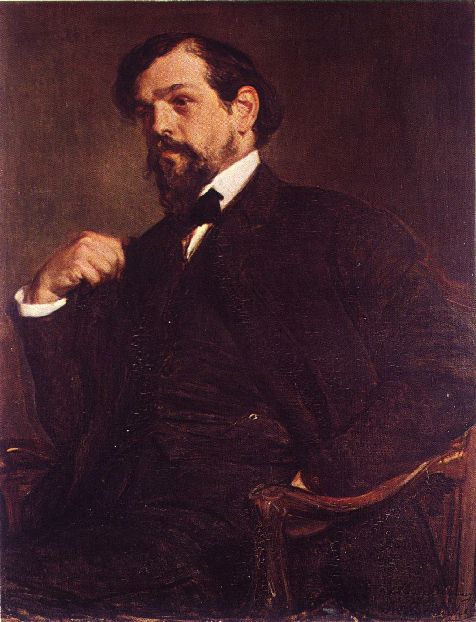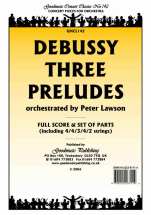Three Preludes
Buy this item (in stock)
Product ID: GM1 CL142
By Claude Debussy
Publisher:
Goodmusic
Arranger:
Lawson
Series:
Concert Classics
Genre:
Impressionism
Line Up:
Symphony Orchestra
Duration:
9:00
Level: 4
Set & Score
This item is in stock
About this item
Debussy wrote two sets of twelve Preludes for solo piano between 1909 and 1913. The Danseuses de Delphes suggests the slow and stately movement of dancers from Delphi, at the foot of Mount Parnassus, as illustrated on ancient Greek vases and is the very first of the twenty-four preludes. The musical world which it inhabits - with its hauntingly-beautiful chromatically-rising augmented chords - is, nevertheless, much more straightforward than the mysteriously exotic language of La terrasse des audiences du clair de lune, taken from Book two. The inspiration for latter is said to have been an article in the magazine Le Temps in which the author describes the moonlit coronation of King George V as Emperor of India in 1912. Debussy always wistfully placed the titles of his individual preludes in brackets at the end of the pieces - as if to merely offer a clue as to the initial inspiration and as an indication that not too much weight should be attached to the them. The third prelude here General Lavine - eccentric, also from Book two, is a light-hearted portrait of a popular contemporary vaudeville juggler, Ed Lavine.
Two other Debussy Preludes orchestrated by Peter Lawson are also available in the Goodmusic Concert Classics series and either or both could be combined with the three here to form a longer suite. They are "La fille aux cheveux de lin" (GMCL141) and "La cathedrale engloutie" (GMCL146).
Instrumentation
2 Flutes (2nd doubling Piccolo), 2 Oboes, 2 Clarinets, 2 Bassoons 4 Horns in F, 2 Trumpets in Bb, 3 Trombones, Tuba, Timpani, Percussion - 4 players (Cymbals, Side drum, Tambourine, Tam-tam, Triangle, Tubular Bells, Glockenspiel, Vibraphone, Xylophon
Reviews and rating
No review available, be the first to write one!

Composer
Claude Debussy (1862-1918)

Claude-Achille Debussy (22 August 1862 – 25 March 1918) was a French composer. Along with Maurice Ravel, he was one of the most prominent figures working within the field of impressionist music, though he himself intensely disliked the term when applied to his compositions.[3] Debussy is among the most important of all French composers, and a central figure in European music of the turn of the 20th century. He was made Chevalier of the Legion of Honour in 1903.
His music is noted for its sensory component and for not often forming around one key or pitch. Often Debussy's work reflected the activities or turbulence in his own life. His music virtually defines the transition from late-Romantic music to 20th century modernist music. In French literary circles, the style of this period was known as symbolism, a movement that directly inspired Debussy both as a composer and as an active cultural participant.
More info about the composer...



 Click above to view samples
Click above to view samples
